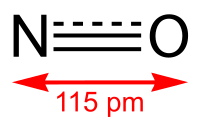
Photo from wikipedia
The stories of fluorinated inhalation anesthetics, including synthesis, physicochemistry and pharmacologies, were summarized in this review. Retrospecting the history of inhalation anesthetics revealed their increasing reliance on fluorine and ether… Click to show full abstract
The stories of fluorinated inhalation anesthetics, including synthesis, physicochemistry and pharmacologies, were summarized in this review. Retrospecting the history of inhalation anesthetics revealed their increasing reliance on fluorine and ether structures. Halothane causes a rare but severe immune-based hepatotoxicity, which was resplaced by enflurane in the 1970s. Isoflurane took the place of enflurane in the 1980s, showing modest advantages (e.g., lower solubility, better metabolic stability, and without convulsive predisposition). Desflurane and sevoflurane came into use in the 1990s, which are better anesthetics than isoflurane (less hepatotoxicity, lower solubility, and/or markedly decreased pungency). However, they are still less than perfect. To gain more ideal inhalation anesthetics, a large number of fluorinated halocarbons, polyfluorocycloalkanes, polyfluorocycloalkenes, fluoroarenes, and polyfluorooxetanes, were prepared and their potency and toxicity were evaluated. Although the pharmacology studies suggested that some of these agents produced anesthesia, no further works were continued on these compounds because they showed obvious shortages as anasthetics. Moreover, the anesthetic activity cannot be simply predicted from the molecular structures, and it has to be inferred from the experiments. Several regularities were found by experimental studies: 1) the potency and toxicity of the saturated linear chain halogenated ether are enhanced when its molecular weight is increased; 2) the margin of safety decreases and the recovery time is prolonged when the boiling point of the candidate increases; and 3) compounds with an asymmetric carbon terminal exhibit good anesthesia. Nevertheless, the development of new inhalation anesthetics better than desflurane and sevoflurane is still challenging not only because of the poor structure/activity relationship known so far but also the synthetic issues.
Journal Title: Current medicinal chemistry
Year Published: 2019
Link to full text (if available)
Share on Social Media: Sign Up to like & get
recommendations!